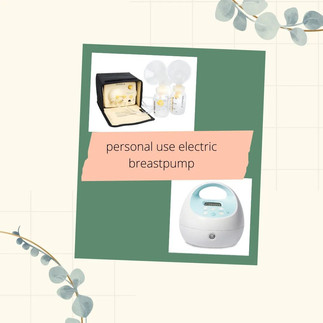Pumping Part-3
- Estelle Fraisse
- Mar 20, 2022
- 2 min read
The offer on the market for breast pumps is large and the price range is wide. What are the categories of breast pumps? (💰and names are given for references ) - Let's start with the most expensive breast pumps on the market, the hospital grade pumps ($1450-$2100)! Names: Medela Symphony, Ameda Elite, Ardo Carum... Only multi user pumps, double flanges, found at the hospital. They are the most efficient, high quality breast pumps, also very heavy. That's the one you want to use to establish a good milk supply and maintain it for a long time. (Separation with baby, premature birth...). Can be rented.
- The personal use breast pumps are single user, double flanges pumps. Most commun pumps covered by the insurance are named Spectra S1,S2, Medela pump in style (advanced)... And many other names. ($200 and up) I encourage clients to look at their insurance policy and see which pumps will be covered and then make some research regarding their personal needs and features they want before making a choice. That is the kind of pump parents need when the lactation is established and they return to work for example.
- Mini electric, battery-operated breast pumps are pretty recent. ($230-$550) The concept is to be able to move while pumping. The mini electric breast pumps have flanges and bottles are held by a bra with holes. The tubing system remains present (Medela freestyle). The handsfree pumps are named Willow, Elvie (the most popular one). They are placed directly in the bra (no more tubing system). Very discreet it can be used while performing some tasks at work. Parents often report a learning curve and a drop in milk supply if used too regularly, the suction not being optimal. Also, batteries need to be charged! (Easy to forget)
- Hand pumps, silicone pumps. Probably the cheapest ($14-$40) lightweight, easy to transport, does not require electricity/battery. Hand pumps need repetitive hand movements. Occasional use. The silicon pumps are squeezed and applied to the breast creating a suction. It catches the let down triggered on the other breast, does not actively drain the breast, and gently collects an extra amount of milk.

















Comments